Today’s Current Affairs: 23rdNov 2023 for UPSC IAS exams, State PSC exams, SSC CGL, State SSC, RRB, Railways, Banking Exam & IBPS, etc
Table of Contents
Climate Equality: A Planet For The 99% : Oxfam Report
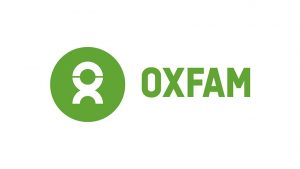
As per the recently released Oxfam report (Climate Equality: A Planet for the 99%), the richest 1% of the global population emitted carbon equivalent to the poorest 66%, leading to 1.3 million heat-related deaths.
- Climate inequality refers to the unequal distribution of the impacts of climate change, with vulnerable and marginalized communities experiencing disproportionate effects.
- It encompasses disparities in exposure to climate-related risks, access to resources for adaptation, and the contribution to greenhouse gas emissions.
Major findings of the Report:
- In 2019, the wealthiest 1% were responsible for 16% of global carbon emissions, equivalent to emissions from the poorest 66% of humanity
- Since the 1990s, the top 1% emitted twice the carbon budget of the poorest half
- By 2030, emissions are projected to be over 22 times the safe limit for staying below 1.5°C global warming.
- Annual global emissions by the super-rich 1% cancel out carbon savings for almost a million onshore wind turbines.
- A tax of 60% on the incomes of the super-rich 1% of earners globally would cut the carbon equivalent of more than the total emissions of the UK and raise over US$6 trillion to fund renewable energy and a transition away from fossil fuels.
Emissions Gap Report 2023: UNEP
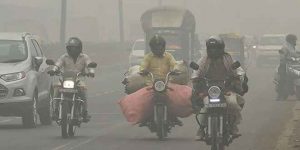
United Nations Environment Programme (UNEP) has released a report titled- the Emissions Gap Report 2023: Broken Record – Temperatures hit new highs, yet world fails to cut emissions (again), stating that urgent Climate Action is crucial to avoid the alarming trajectory of Temperature Rise.
- The report is the 14th edition in a series that brings together many of the world’s top climate scientists to look at future trends in greenhouse gas emissions and provide potential solutions to the challenge of Global Warming.
Emissions Gap Report (EGR):
- The EGR is UNEP’s spotlight report launched annually in advance of the Annual Climate negotiations.
- The EGR tracks the gap between where global emissions are heading with current country commitments and where they ought to be to limit warming to 1.5°C.
Key Highlights of the Report:
- Current pledges under the Paris Agreement set the world on a course for a 2.5-2.9°C temperature rise above pre-industrial levels by the end of this century.
- Paris Agreement (also known as the Conference of Parties 21 or COP 21) is a landmark environmental accord that was adopted in 2015 to address climate change and its negative impacts.
- To limit warming to 1.5-2°C, substantial emission cuts of 28-42% by 2030 are necessary.
- Greenhouse Gas Emissions (GHG) hit a new record of 57.4 Gigatonnes of Carbon Dioxide Equivalent (GtCO2e) in 2022, with a 1.2% increase from the previous year.
- Fossil CO2 emissions account for approximately two thirds of current GHG emissions using 100-year global warming potentials.
- Fossil CO2 emissions grew between 0.8–1.5% in 2022 and were the main contributor to the overall increase in GHG emissions.
- In 2022, fluorinated gases emissions grew by 5.5%, followed by Methane at 1.8% and nitrous oxide (N2O) at 0.9%.
GHG emissions across the G20 also increased by 1.2% in 2022. However, members vary widely in their trends with increases - in China, India, Indonesia and the United States of America, but decreases in Brazil, the European Union and the Russian Federation. Collectively, the G20 currently accounts for 76% of global emissions.23
- In 2022, energy supply was the largest source of emissions at 20.9 GtCO2e (36% of the total), followed by Industry (25%), followed by agriculture and LULUCF CO2 (18%), transport (14%) and buildings ( 6.7%).
- If current policies and pledges continue, global warming will likely reach 3°C above pre-industrial levels by the end of the century.
- Implementing unconditional Nationally Determined Contributions (NDCs) could limit the rise to 2.9°C, while conditional NDCs might cap it at 2.5°C.
- Although countries have made Net-Zero Pledges, none of the G20 Countries are reducing emissions at a pace consistent with their targets.
- Even in the most optimistic scenario, the likelihood of limiting warming to 1.5°C is only 14%.
Risk Weight : RBI
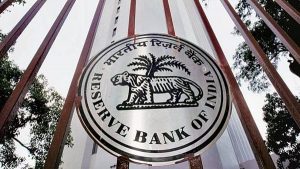
The Reserve Bank of India (RBI) has increased the cost of funds for banks and non-bank financial companies (NBFCs) by increasing the risk weight of such loans.
- The Reserve Bank of India has raised the risk weight on consumer credit by banks and NBFCs to 125%, compared to 100% earlier.
- Risk weight is every rupee lent by the bank is a cost or has an implication on its capital position.
- These are used to determine the minimum amount of capital a bank must hold in relation to the risk profile of its lending activities and other assets.
- The Reserve Bank of India decided in April 1992 to introduce a risk-asset ratio system for banks (including foreign banks) in India as a capital adequacy measure in line with the Capital Adequacy Norms prescribed by the Basel Committee.
- Lower the risk weight, lower the rate of interest. Therefore, risk weights impact borrowers indirectly and are felt through the pricing of loans.
- The increase in risk weights by the RBI will elevate funding costs for NBFCs and impact capital requirements.
Naval Anti-Ship Missile Short Range:
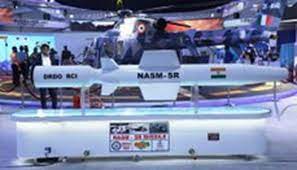
The Indian Navy, in association with DRDO, successfully undertook Guided Flight Trials of the first indigenously developed Naval Anti-Ship Missile Short Range (NASM-SR) from a Sea King 42B helicopter recently.
- Naval Anti-Ship Missile Short Range (NASM-SR) is the first indigenous air-launched anti-ship cruise missile developed for the Indian Navy.
- It was developed by the Defence Research and Development Organisation (DRDO).
- It can be launched from attack helicopters.
- This missile will replace the Sea Eagle missiles, which are currently in use with the Navy.
- With the Sea King helicopters also being phased out, it is expected that the NASM-SR will be used with the new MH-60R multi-role helicopters, which are being inducted into the Navy.
- The missile’s new guidance system includes a state-of-the-art navigation system and integrated avionics.
- It employs several new technologies, including an indigenously developed launcher for the helicopter.
- With a strike range of around 60 km, the air-launched anti-ship missile can travel at a speed of Mach 0.8.
- It would have an imaging infrared seeker, which would home in on the heat emissions of its targets.
- It can have a warhead of 100kg and is capable of sinking patrol boats and damaging larger warships.
- The NASM-SR, on approach to its target, can cruise at just 5 metres above sea level, making it difficult for enemy radars to detect, track, and shoot down with surface-to-air missiles or guns.
- This low-level capability of anti-ship missiles is known as sea skimming.
Qianlong Shouhu : Unknown Dinosaur Species

Researchers in China recently discovered a previously unknown dinosaur species named ‘Qianlong shouhu’ alongside dozens of its unhatched eggs.
- Alongside the adult specimens, the Chinese researchers also uncovered around 50 fossilised eggs of the same species, spread out across five different nests that contained the skeletal remains of the embryos inside them.
- The discoveries may represent the earliest known fossil record of adult dinosaurs and their associated egg nests.
- Qianlong Shouhu belongs to a group of dinosaurs known as sauropodomorphs, which contains sauropods and their ancestors.
- It lived in what is now China during the Early Jurassic epoch, between 200 and 193 million years ago.
- The name of the new species roughly translates to “a dragon in Guizhou that protects its embryos.”
- It was a medium-sized sauropodomorph that measured roughly 20 feet in length and likely weighed 1 tonne.
- Their eggs were elliptical in shape and relatively small.
- The eggshells may have had a texture similar to leather. It provides “strong evidence” for the earliest known “leathery” eggs.
Exercise Vajra Prahar 2023:

The Indo-US Joint Special Forces exercise “VAJRA PRAHAR 2023” commenced at the Joint Training Node, Umroi, Meghalaya.
- VAJRA PRAHAR is a joint exercise conducted between the Indian Army and the US Army Special Forces.
- It aims at sharing best practises and experiences in areas such as joint mission planning and operational tactics.
- It is the 14th Edition of the Indo-US Joint Special Forces exercise “VAJRA PRAHAR 2023,” which commenced at the Joint Training Node, Umroi
- The US contingent is represented by personnel from the 1st Special Forces Group (SFG) of the US Special Forces. The Indian Army contingent is led by Special Forces personnel from the Eastern Command.
- The first edition was conducted in 2010 in India, and the 13th edition of the Indo-US Joint Special Forces exercise was conducted at the Special Forces Training School (SFTS), Bakloh (HP).
- The current edition is being conducted in Umroi Cantonment, Meghalaya from 21st November to 11th December 2023.
- It is also a platform to enhance inter-operability and strengthen defence cooperation between the armies of India and the United States of America.
Tantalum : Found In The Sutlej River Sand
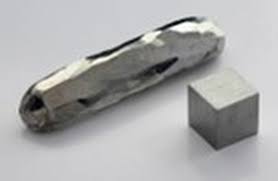
A team of researchers from the Indian Institute of Technology (IIT), Ropar, found the presence of tantalum, a rare metal, in the Sutlej river sand in Punjab.
- Tantalum is a rare metal with the atomic number 73—the number of protons found in one atom of the element.
- The rare metal has been named after a Greek mythological figure, Tantalus.
- It’s grey, heavy, very hard, and one of the most corrosion-resistant metals in use today.
- It possesses high corrosion resistance because, when exposed to air, it forms an oxide layer that is extremely difficult to remove, even when it interacts with strong and hot acid environments.
- When pure, tantalum is ductile, meaning it can be stretched, pulled, or drawn into a thin wire or thread without breaking.
- It is almost completely immune to chemical attack at temperatures below 150°C and is attacked only by hydrofluoric acid, acidic solutions containing the fluoride ion, and free sulphur trioxide.”
- It also has an extremely high melting point, exceeded only by tungsten and rhenium.
- When it is placed in the midst of acids, it is incapable of taking any of them up
Atmospheric Waves Experiment : NASA
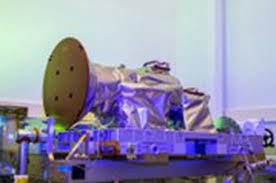
NASA is set to launch the Atmospheric Waves Experiment (AWE) to study ‘airglow’ to understand space weather.
- Atmospheric Waves Experiment (AWE) is a first-of-its-kind NASA experimental attempt aimed at studying the interactions between terrestrial and space weather.
- It is planned under NASA’s Heliophysics Explorers Programme.
- This mission will study the links between how waves in the lower layers of the atmosphere impact the upper atmosphere and, thus, space weather.
- It will be launched and mounted on the exterior of the Earth-orbiting International Space Station (ISS).
- It will look down at the Earth and record the colourful light bands, commonly known as airglow.
- The new NASA mission will try to understand the combination of forces that drive the Space weather in the upper atmosphere.
- It will measure the airglow at mesopause (about 85 to 87 km above the Earth’s surface), where the atmospheric temperatures dip to minus 100 degrees Celsius.
- At this altitude, it is possible to capture the faint airglow in the infrared bandwidth, which appears to be the brightest, enabling easy detection.
- It will be able to resolve waves at finer horizontal scales than what satellites can usually see at those altitudes, which is part of what makes the mission unique.
- The health of the ionosphere, whose lower layers sit at the edge of space, is important for maintaining seamless communication.
Gambusia Fish : Released To Address Mosquito Menace

Various government and non-governmental organisations in Andhra Pradesh, Odisha, and Punjab have released Gambusia fish into local water bodies to address a mosquito menace.
- Gambusia fish is known as mosquitofish and, is widely used as a biological agent for controlling mosquito larvae.
- It is native to the waters of the south-eastern United States.
- It has been a part of mosquito-control strategies for over a century in various parts of the world, including India.
- A single full-grown fish eats about 100 to 300 mosquito larvae per day.
- Also, it has been part of various malaria control strategies in India since 1928, including the Urban Malaria Scheme.
- The International Union for Conservation of Nature (IUCN) declares Gambusia one of the 100 worst invasive alien species in the world.
Malaria:
- It is a disease caused by the Plasmodium parasite.
- The parasite can be spread to humans through the bites of infected mosquitoes.
- The plasmodium parasite is spread by female Anopheles mosquitoes, which are known as “night-biting” mosquitoes because they most commonly bite between dusk and dawn.




